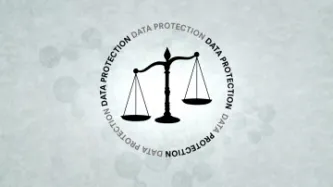Advanced Search
Content Type: Examples
By 2016, a logical direction for data-driven personalisation efforts to go was toward the "Internet of Emotions": equipping devices with facial, vocal, and biometric sensors that use affective computing to analyse and influence the feelings of device owners. Of particular concern is the potential for using subtle cues to manipulate people in a more nuanced way than is presently discussed. The beginnings of this are already visible in the example of an Amazon Echo that displayed the items a…
Content Type: Examples
Because banks often decline to give loans to those whose "thin" credit histories make it hard to assess the associated risk, in 2015 some financial technology startups began looking at the possibility of instead performing such assessments by using metadata collected by mobile phones or logged from internet activity. The algorithm under development by Brown University economist Daniel Björkegren for the credit-scoring company Enterpreneurial Finance Lab was built by examining the phone records…
Content Type: Examples
In 2015, Boston advertising executive John Flynn, CEO of Copley Advertising, began developing a system that uses standard online advertising and tracking techniques, coupled with geofencing, to send advertisements to women's smartphones when they are sitting inside Planned Parenthood clinics and other abortion facilities. The system was soon adopted by the northern California-based crisis pregnancy centres network RealOptions and the evangelical adoption agency Bethany Christian Services. The…
Content Type: Examples
In 2016, researchers at MIT's Computer Science and Artificial Intelligence Laboratory developed a new device that uses wireless signals that measure heartbeats by bouncing off a person's body. The researchers claim that this system is 87% accurate in recognising joy, pleasure, sadness, or anger based on the heart rate after first measuring how the individual's body reacts in various emotional states. Unlike a medical electrocardiogram, it does not require a sensor to be attached to the person's…
Content Type: Examples
In 2016, the Big Data lab at the Chinese search engine company Baidu published a study of an algorithm it had developed that it claimed could predict crowd formation and suggested it could be used to warn authorities and individuals of public safety threats stemming from unusually large crowds. The study, which was inspired by a New Year's Eve 2014 stampede in Shanghai that killed more than 30 people, correlated aggregated data from Baidu Map route searches with the crowd density at the places…
Content Type: Impact Case Study
What is the problem
For over two decades we have been documenting an alarming use and spread of surveillance. It is no longer just the wars on terror or drugs or migration that is driving this trend. The management of health crises and distribution of welfare regularly are among others being used to justify this turn to increasingly invasive forms of surveillance. From country to country we see the same ideas and the same profiteers expanding their reach.
When we first released our report on…
Content Type: Impact Case Study
What is the problem
Business models of lots of companies is based on data exploitation. Big Tech companies such Google, Amazon, Facebook; data brokers; online services; apps and many others collect, use and share huge amounts of data about us, frequently without our explicit consent of knowledge. Using implicit attributes of low-cost devices, their ‘free’ services or apps and other sources, they create unmatched tracking and targeting capabilities which are being used against us.
Why it is…
Content Type: Impact Case Study
What happened
Since the late 1980s governments across the world have been trying to build identity registries. By the early 1990s, there were similar policies being pursued by a number of governments across the Pacific region, with similar technologies from the same companies. In the mid-90s ID cards became a ‘modern’ policy, implementing smart cards. By 9/11 biometric IDs became the preferred solution to undefinable problems. Then came vast databases of biometrics to identify people — with…








